Autonomous heating of a country house: how to heat your own
Heat in urban apartments is provided by public utilities, which are responsible for the presence of hot coolant in radiators. But in order not to freeze in the winter in your own cottage you will need an autonomous system of heating a country house. When designing it, you need to take into account many nuances and peculiarities, otherwise you can not only freeze, but also ruin the just finished repair in the rooms.

Varieties of climate networks
Autonomous house heating system is one of the most important engineering networks. Especially if your cottage is located in an area with severe winters, which is not uncommon for the domestic climate. The oven which was widely used earlier will not be able to properly heat all the rooms of a house, and, as a rule, they do not equip centralized heat supply networks outside the city limits.
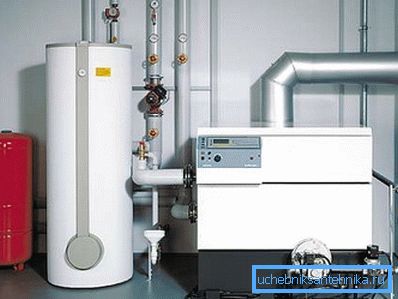
But do not be upset. High-quality heating system can be designed independently. Moreover, with its help you will be able to change the temperature regimes more flexibly and will achieve not only greater comfort, but savings in utility bills.
Tip! If you decide to design an autonomous heating of the house with your own hands, it is recommended to invite an experienced specialist before launching it into operation. He will check the correctness of the work done and help to eliminate the shortcomings in the installation.
Currently, there are three main types of climate systems that can be used to heat a private cottage. Their brief overview is given in the table.
| Variety | Description |
| Water heating | This is the traditional scheme of autonomous heating of the house. It implies the installation of a heating boiler, radiators and pipes connecting these elements with each other. The fluid circulates in a closed circle, is heated by the boiler and releases thermal energy to the air in the room through the heat exchanger of the radiator. |
| Air heating | In this case, the heat source is air. It is heated in a special device, after which it is distributed through pre-installed ventilation ducts to all the premises of the dwelling. According to this scheme, autonomous heating of a country house is often carried out, in which people are not expected to live year-round. A huge plus is the low inertia and lack of coolant. |
| Electric heating | To increase the air temperature in the rooms, in this case autonomous heaters for the house are used: convectors or infrared heaters. The advantage of such a system is speed and ease of installation. Minus - the high cost of operation, as the price of electricity is higher than other energy sources (gas, diesel, firewood, and so on). |
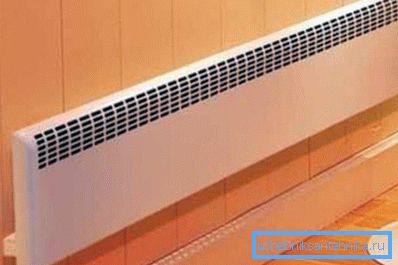
Without going into technical details, it should be noted that the optimal heating scheme is the first.
As already mentioned, the water heating system consists of several basic elements:
- heating boiler;
- heating radiators;
- pipelines with an expansion tank;
- circulation pump (in the case of installation of systems with forced coolant current);
- additional devices (valves, thermostats, air valves, indirect heating boilers, and so on).
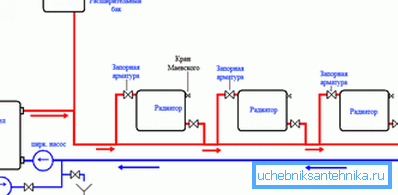
Note! The traditional water heating scheme of the house is very flexible. Not only a widespread gas, but also a solid fuel, liquid fuel or electric boiler can act as a heater.
You can change the heater at any time depending on changes in the cost of coolants. Moreover, there is a climatic equipment operating on several types of fuel. It makes the system even more independent and economical.
Independent installation of heating
Choosing a pipe layout method
Instructions for designing a climate system is quite simple, but it requires accurate and accurate adherence to the entire prescribed sequence of actions. Otherwise, after starting the heating system, breakdowns are possible, which are very difficult to repair.
It should also be noted that the installation of gas equipment - working on the trunk or bottled gas - can only be carried out by experienced professionals who have the appropriate certificates. The basis for installing the boiler is the permission obtained in advance.
Before you start, you should choose a layout:
- single pipe - more economical in terms of capital costs, but does not allow to precisely control the temperature in the rooms;
- two-pipe - it will take twice the amount of materials to design it, but the benefits that you end up with are worth the money spent;
- ray - it is very complicated and expensive to install, therefore for its arrangement it is desirable to attract specialists.
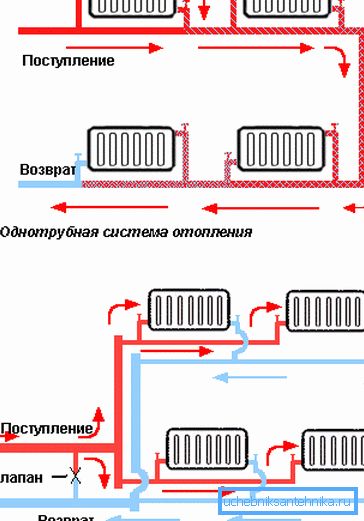
Let us consider in more detail the second option as the most effective and fairly simple to install:
- As you already understood from the name, this scheme of supply of the heat carrier has two circuits: supply and return. Between them, jumpers are laid, in which heating radiators are embedded.
- It is advisable to install the supply pipe on the same level as the battery nozzles, and the return pipe - on the floor. It is also necessary to ensure the slope of the pipes towards the boiler. This will ensure the natural flow of the coolant and help avoid airing.
Note! Even if you intend to install a centrifugal pump that provides water pumping, it is desirable to follow the prescribed slope of the SNiP. So your system will remain operational in the event of a power outage or electrical breakdown.
- Plastic piping systems with forced circulation can be bricked into walls or floors. At the same time, it is necessary to ensure that no connecting fitting is installed hidden (in concrete), otherwise in the event of a breakdown you cannot avoid major troubles and costly repairs.
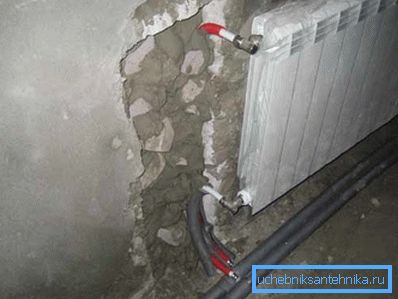
- An essential element of a water heating system should be an expansion tank.. It allows you to compensate for thermal expansion of the fluid and to normalize the pressure in a closed system. It is better to buy sealed containers of membrane type, since they exclude losses of the coolant and can be mounted at any point of the system.
Features of arrangement of the heating system
When designing a heating network, in order to increase its efficiency and economy, it is necessary to observe the following requirements:
- In order to avoid significant heat losses and ensure the normal circulation of fluid in gravity systems, it is necessary to warm the central supply riser. This reduces the heat exchange between the pipe and the air, and also keeps the water temperature at the required level before it enters the radiators.
- In order for the system to work properly, it is necessary to ensure that the coolant is located in all, even the most remote parts of the heating system. Manual or automatic air valves should be installed on each radiator and difficult sections of pipelines. They will avoid the formation of air plugs that cut off parts of the heating system.
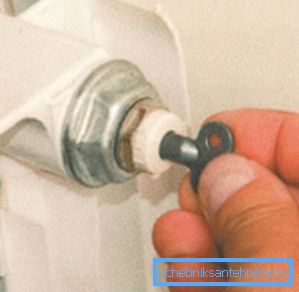
- The height difference between the radiators and the boiler must be at least three meters. Therefore, the heater is often mounted in the basement.
Remember that the gas boiler cannot be installed like this. This is prohibited by safety and fire regulations. To ensure the flow of water, use pumps. But in this case it is necessary to ensure the difference in heights of at least 20-30 cm.
- If your house has a large area (more than 200 sq. M.) Or the total length of heating pipes exceeds 30 meters, you will have to forget about the gravitational heating system. The use of pumps in this case is mandatory.
Useful tips
Following the recommendations below, you can design the most high-quality and efficient heating system:
- Choose only quality pipes, couplings, fittings, valves and other parts. Saving on little things can lead to big trouble from leaking pipes.
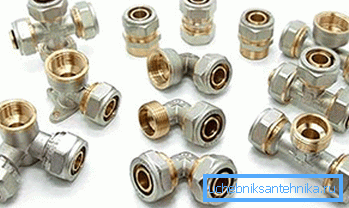
- For the supply riser, it is desirable to use a pipe with a diameter of at least an inch, otherwise the hydraulic resistance will not allow the fluid to rise to the top of the system. It is necessary to install an additional pump.
- All pipes must be laid with a slope from the supply riser to the boiler. For a gravitational system, this requirement is mandatory. As for the network with forced circulation, compliance with this standard will provide a natural air outlet when filling pipes with coolant.
- It is desirable to equip each heating radiator with a manual or automatic tap that regulates the volume of coolant supply and, accordingly, the temperature.
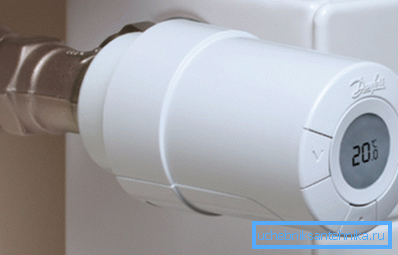
Selection of heating equipment
When buying a boiler, it is necessary to correctly calculate the power generated by it.
The amount of heat capacity required for heating a house depends on the area of the dwelling, as well as some additional factors:
- wall material;
- the presence of insulation and heat insulators used for this;
- the number and area of window openings, types of used window blocks;
- number of floors of house building;
- climatic conditions prevailing in the area where the house is located, and much more.
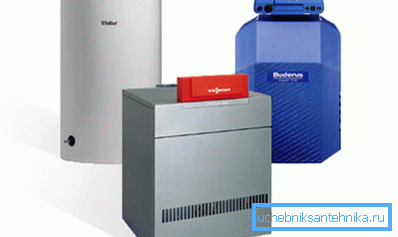
The next point is the choice of the type of energy carriers. The gas boiler is rightly considered to be the most economical, however, for its operation a gas pipeline is required.
However, there are other models on the market:
- solid fuel - economical enough boilers, which during operation require periodic loading of firewood or coal;
- liquid fuel - can work for a long time without human intervention, but when using them, you need to equip a sufficiently large heated storage for diesel fuel;
- electric - A great option, but not the most economical.
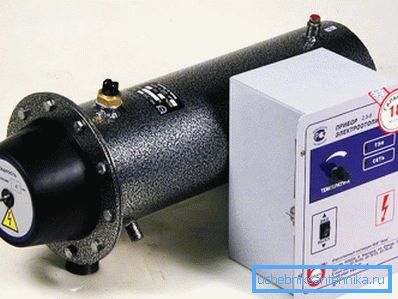
Conclusion
Water heating system - one of the most effective ways to heat premises. However, in the event of a breakdown, the heat transfer fluid circulating through the pipes may freeze. This will disable the costly electrical equipment and radiators.
Therefore, in the event of an emergency, it is necessary to act without delay and drain the liquid using a valve specially provided for this. For more information about the features of the operation of engineering networks of a private house, see the video below.